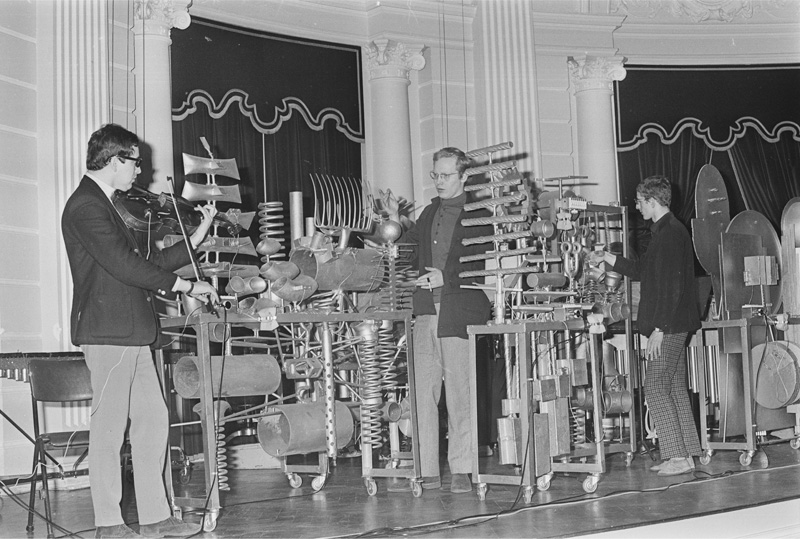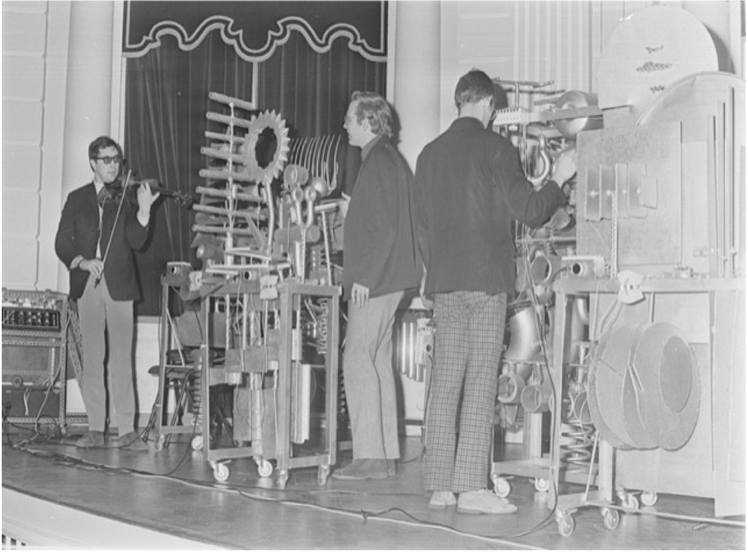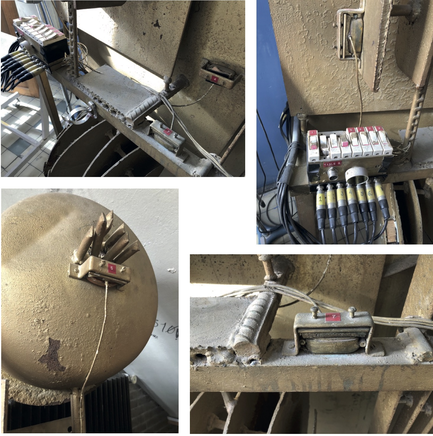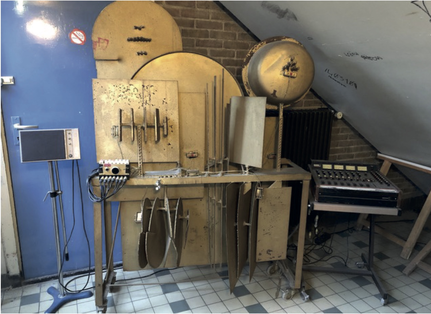The idea of amplifying metal sounds with contact microphones was also applied by the Dutch composer Peter Schat (1935-2003). Early in his career, with the help of the sculptor Frans De Boer-Lichtvelt and the technician Jo Scherpenisse, he designed an instrument named Artaudofoon. In the '60s Peter Schat was part of a group of politically engaged young composers that included Misha Mengelberg, Louis Andriessen, Dick Raaymakers, Jan van Vlijmen, Reinbert de Leeuw, and Konrad Boehmer, who founded the “Studio voor Elektro-Instrumentale Muziek” - STEIM.1 Nico Bes – who worked at STEIM as a technician since 1971 – recalls that one of his first experiences with the technology of contact microphones was the Artaudofoon.2 The instrument, as the name suggests, was inspired by the Theatre of Cruelty of Antonin Artaud, and consisted of five metal sculptures, whose sound was amplified by contact microphones attached to them. According to Jo Schepernisse,3 Schat used military throat-microphones (used by helicopter-pilots). The history of this huge instrument is controversial. As recounted by Bas Van Putten in Peter Schat's biography, the idea of this project started in 1965, when Peter Schat obtained a grant from the Prince Bernhard Fund. While working on his opera Labyrinth4 he developed the idea of building a huge electro-acoustic percussion instrument, equipped with many “contact microphones, a filter, a modulator, an amplifier and a set of loudspeakers” (Van Putten 2015, p.381). In September 1966 Schat also tried to get funding from Philips because the instrument was presenting many technical problems and he had underestimated the costs of the electronic parts. In 1966 Schat received a commission by the Rotterdam Art Foundation to write Electrocution, which should have been - in Schat's original idea - a total theatrical work, using the Artaudofoon as the percussive instrument, but this work was never written. Nevertheless, in Schat biography, Van Putten mentions the movie The Gangster Girl (1966) by Frans Weisz,5 in which a scene of a concert – filmed in the Kleine Zaal of the Concertgebouw of Amsterdam – features a composition played by the Artaudfoon and three double basses (see video excerpt). According to Van Putten, Peter Schat played two roles in the movie: “the Stranger", a guy who falls in love with the gangster's girl, and the role of the conductor of his own music for Artaudofoon (Van Putten 2015, pp.386-389).
The picture from The Memory of the Netherlands Database (fig.1.9.1) – an online heritage collection of Dutch historically relevant paintings, drawings, stamps, posters and photographs – was probably taken during the shooting of the movie, since the location looks alike. The Memory of the Netherlands Database dates the picture March 14th, 1966, but it does not mention the movie. In the newspaper San Francisco Examiner (July 17, 1966) it is possible to find a similar picture, which caption mentions the Artaudofoon as the percussion instrument “unveiled last week” (unfortunately the dates do not match perfectly), but without any reference to the occasion in which the picture was taken.
In the scene of the over-mentioned movie, the fragment played in the concert was probably an improvisation or a part of an open-form piece, such as the one published in 1967 by Donemus. The latter, titled First Essay on Electrocution, for violin, guitar and metal percussion instruments (3 players), seems to be a work in progress, as can be deduced from Schat's request to settle the fee, unusually written in the score, right before the technical notes6. A statement later in the technical notes – “it is the best to use the Artaudofoon for the performance […] it is, however, also possible to use cymbals and other metal percussion instruments, the sound of which is scanned with contact microphones” – suggests that Schat was becoming aware of the difficulties in the use of the Artaudofoon. Soon, in fact, the project was abandoned and the Artaudofoon was forgotten. One part of it is still archived at STEIM, as documented by the pictures taken by Nico Bes (fig.1.9.2).
>> go to Conclusions






